Color makes the car. You can have the most boring car, but paint it in an interesting hue and someone’s interest may be piqued. Or you can have a totally hot car that looks completely subdued in certain colors. Our Pick of the Day, a 1970 Ford Mustang Boss 302, falls in the latter category. It is listed for sale on ClassicCars.com by a dealership in Springfield, Ohio.
If you glance at the Ford Torino GT pace cars that were scattered around several tracks in 1970, they all were painted in Pastel Blue. Why did Ford choose this color for that purpose? It doesn’t project an image reeking of performance, and it also doesn’t call attention to itself the way you’d expect.
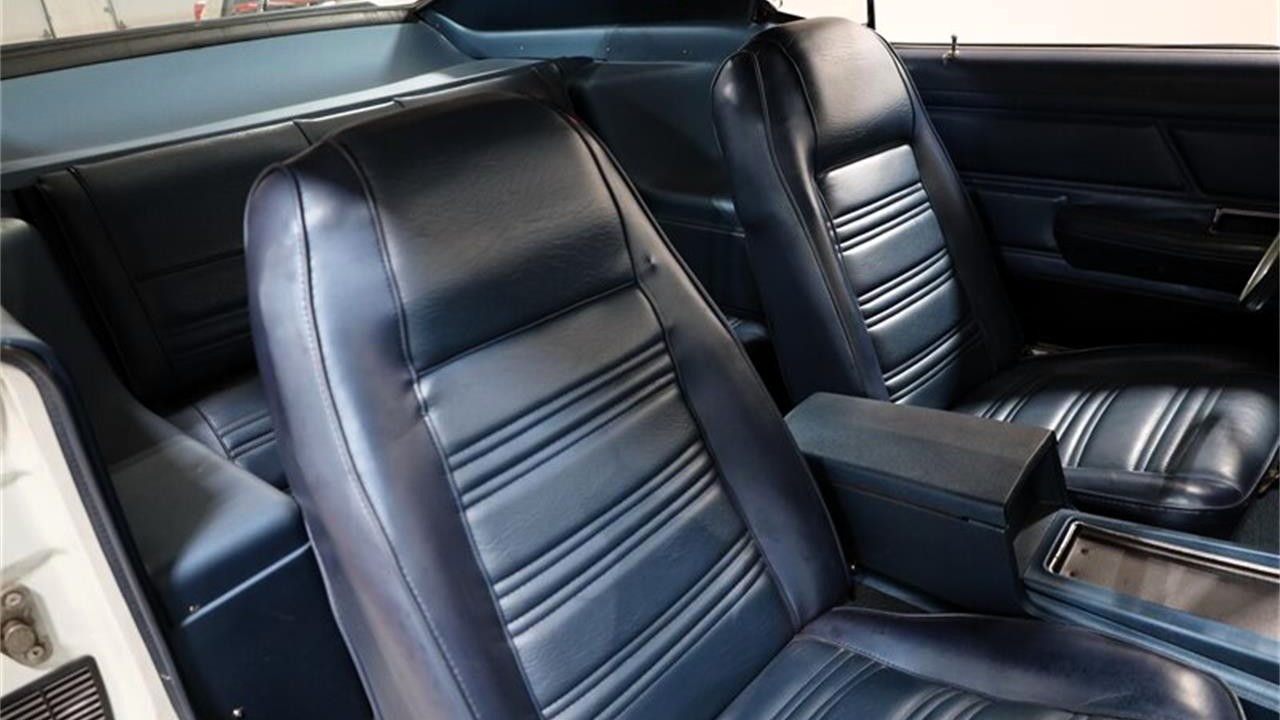
Let’s pivot to the Mercury Cougar Eliminator, which was available only in a few colors. For 1970, they seemingly were bright colors: Competition Orange, Competition Gold, Competition Blue, Competition Green, Competition Yellow . . . and Pastel Blue. If these colors feel familiar to Mustang fans, it’s because the 1970 Boss 429 was also available in most of these hues, though known as Calypso Coral, Grabber Orange, Grabber Blue, Grabber Green . . . and, yes, Pastel Blue.
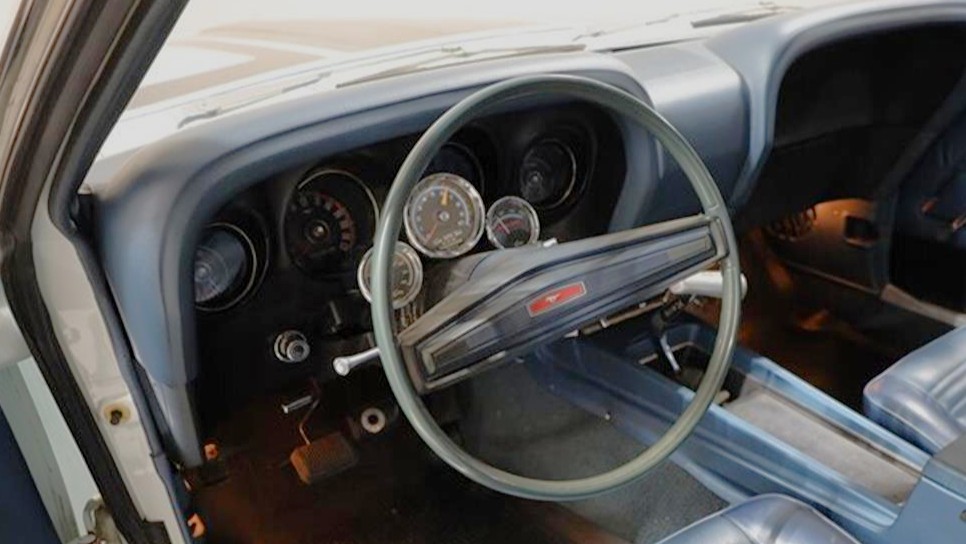
Why Pastel Blue was used as part of a limited set of colors for what were FoMoCo’s most image-laden and visible products is only known to dead Ford employees. Trying to make logic brings us to a dead end—for example, American racing colors are blue with white racing stripes, but the blue is closer to a Royal Blue than Pastel Blue, so insert shruggy here.
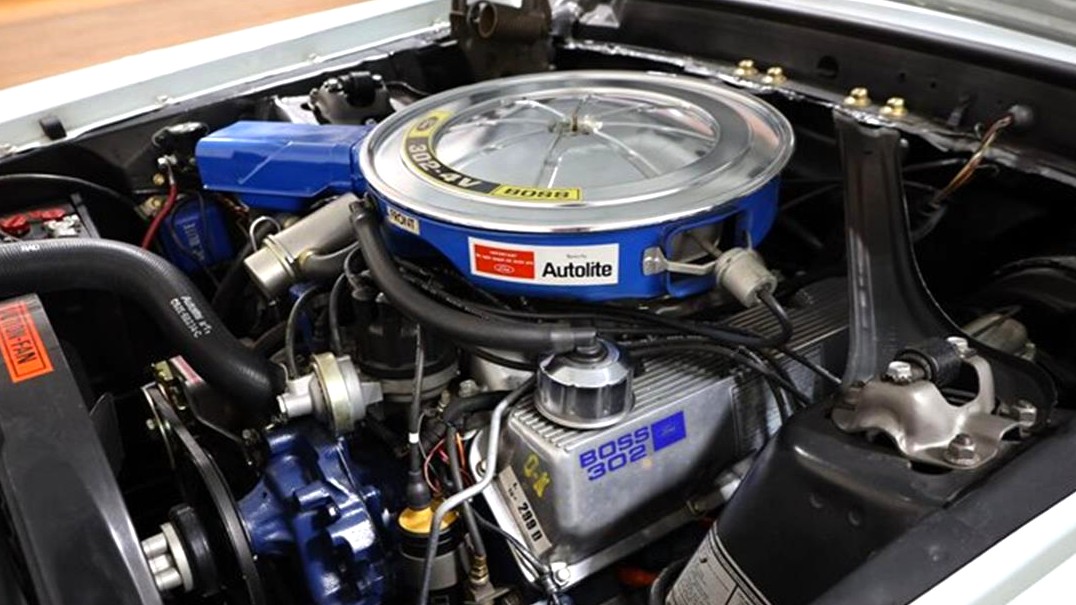
Interestingly, the 1970 Ford Mustang Boss 302 was not restricted to several colors. After an auspicious start in 1969, this Trans Am homologation package returned for 1970. Though the facelift removed two headlights, the new styling was overshadowed by a new stripe design, which gave the Boss 302 a fresh look that was equally as racy as its predecessor. Stripes were not the only thing new for the Boss 302 package—a Shaker hood scoop option was a popular addition, high-back bucket seats were now standard, and the formerly standard Magnum 500s were replaced by Ford’s basic wheel cover with trim rings. With dexterous use of the order form, one could spec the sportiest of Mustangs by ordering a SportsRoof with the Boss 302 package, Shaker, rear spoiler, and Magnum 500s.
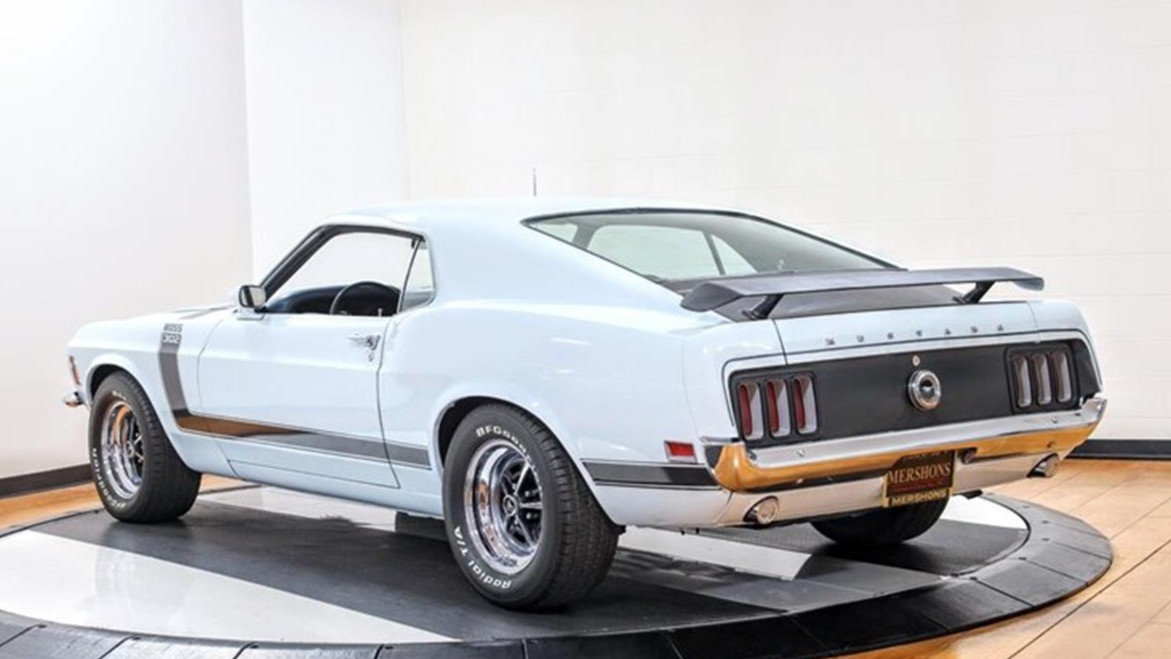
Yellow appears to be the most popular Boss 302 color for 1970. And Pastel Blue? Only 66 Boss 302s were built in this color. This 1970 Ford Mustang Boss 302 also stands out in other ways, as the only other options were an AM radio and F60 x 15 belted raised white-letter tires. Note the Marti Report—it shows this car was ordered for dealer stock. In such a subdued color? Strange! Also note that a previous owner added good stuff including rear spoiler, console, gauges, and Magnum 500s in addition to the Competition Suspension, quick-ratio steering, and front disc brakes that were part of the Boss 302 package. “Appears to be all-original sheet metal!” says the seller. “Like-new stainless and chrome! Clean and dry, rust-free underbody that is very nicely detailed!”
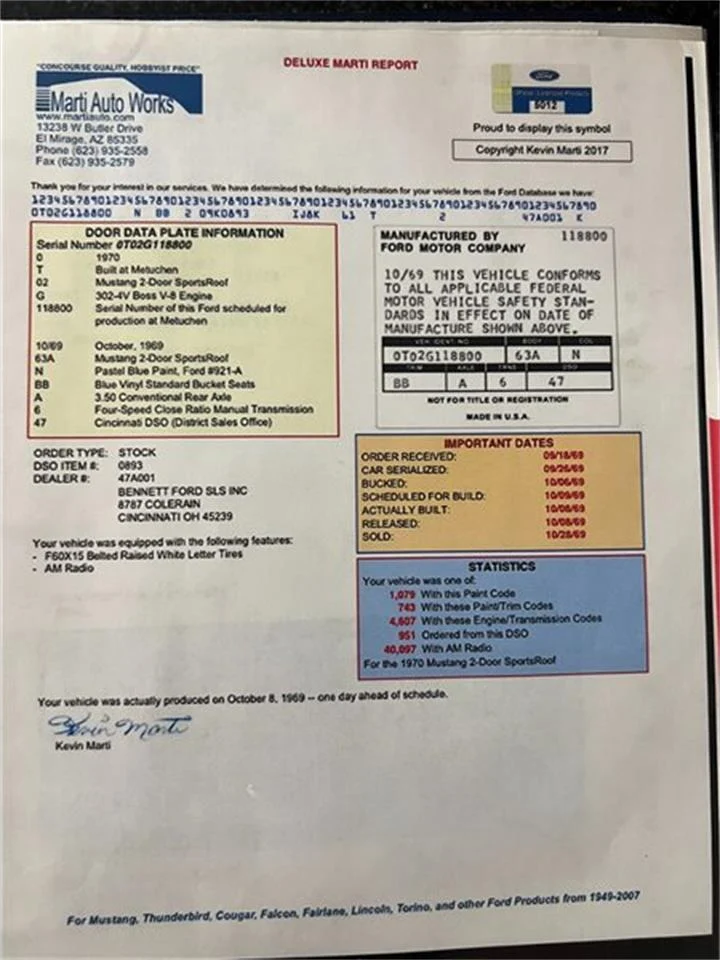
Boss 302s are easy to find, having had a high survival rate out of the 7,014 built. Very few of them were built in colors rarer than Pastel Blue. If you don’t want to call attention to yourself while calling attention to yourself, then this $75,900 Mustang is calling your name.
Click here to view this Pick of the Day on ClassicCars.com


